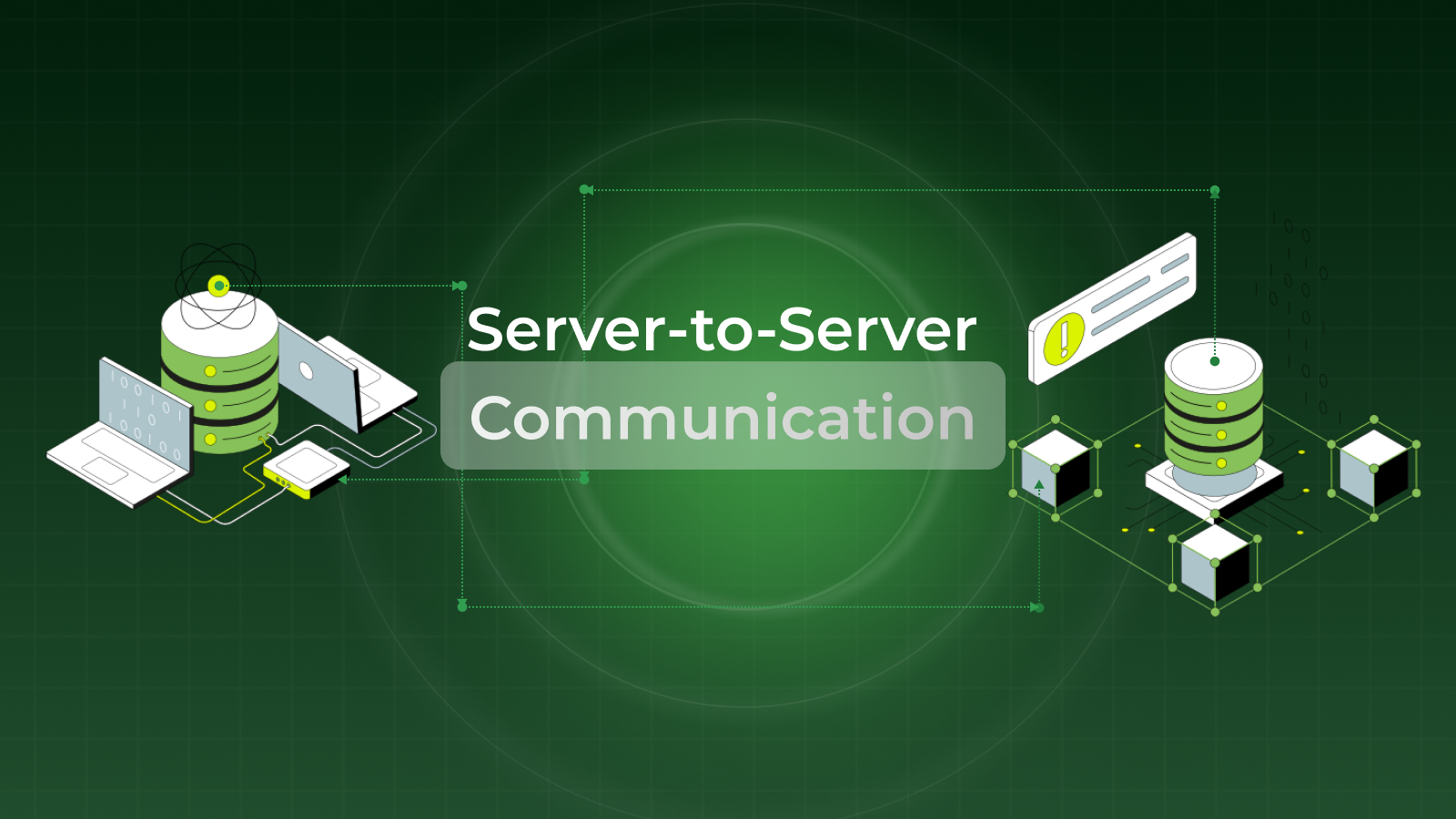Server to Server (S2S) communication refers to the process where two or more servers interact directly with each other without the involvement of a client (e.g., a user's device or a web browser). This communication can be used to exchange data, perform background processes, or coordinate actions between systems. It's commonly used in various scenarios, including microservices architecture, cloud services, data synchronization, and APIs.
Importance of Server to Server (S2S) Communication
Seamless Operations
Server to Server (S2S) is critical for maintaining seamless operations in environments with high data traffic. It ensures that multiple servers can work together efficiently to handle large volumes of requests simultaneously.
Real-time Data Handling
Server to Server (S2S) enables real-time data processing and synchronization, which is essential for applications that require immediate updates, such as management systems and management (CRM) tools.
Enhanced User Experience
By ensuring that data is consistently updated across servers, Server to Server contributes to a better user experience. Users benefit from faster response times and more reliable services, which can lead to higher satisfaction and retention.
Scalability
Server to Server architecture supports the easy addition of more servers as demand increases. This scalability is vital for businesses experiencing growth, as it allows them to enhance their infrastructure without significant changes to the existing setup.
Key Aspects of Server to Server (S2S) Communication
Direct Communication
S2S (Server-to-Server) allows servers to exchange data and requests directly, which minimizes latency and enhances performance. This is particularly useful in scenarios where rapid data exchange is crucial, such as real-time analytics.
Load Distribution
By enabling servers to communicate with one another, Server to Server (S2S) helps distribute workloads evenly. This ensures that no single server becomes a bottleneck, thereby improving overall system reliability and efficiency.
Data Synchronization
In a typical Server-to-Server setup, servers can synchronize data across different systems. For example, one server might handle user requests, while another processes transactions and a third manages user data. Server to Server (S2S) ensures that all these servers remain updated with the latest information, which is critical for maintaining consistency and accuracy in operations.
Protocols and Technologies
Various protocols facilitate Server to Server (S2S) communication using APIs (Application Programming Interfaces) or other standardized protocols like HTTP, HTTPS, WebSocket, gRPC, or even custom protocols. These protocols define how servers communicate, ensuring that data is exchanged in a structured and reliable manner.
Security and Authentication
Since no direct client is involved, security measures are critical. Common methods include API keys, OAuth tokens, SSL/TLS for encrypted communication, and mutual authentication methods to ensure only authorized servers can communicate.
Protocols and Methods
- RESTful APIs: Using HTTP/HTTPS requests to GET, POST, PUT, and DELETE data.
- SOAP: A protocol for exchanging structured information in the implementation of web services.
- gRPC: A high-performance, open-source framework that uses HTTP/2 for transport, protocol buffers as the interface description language, and provides features like authentication, load balancing, and more.
- Message Queues: Systems like RabbitMQ, Kafka, or AWS SQS that enable asynchronous communication between servers.
Challenges in Server-to-Server Communication
While S2S (Server-to-Server) communication offers many advantages, it also presents challenges:
Network Latency
The physical distance between servers can introduce latency, affecting the speed of data transfer. Optimizing network paths and using efficient data transfer protocols can mitigate this issue.
Security Concerns
As servers communicate directly, ensuring data security during transmission is crucial. Implementing encryption and secure protocols can help protect sensitive information from unauthorized access.
Complexity in Management
Managing multiple servers and ensuring they communicate effectively can be complex. Proper monitoring and management tools are necessary to maintain performance and reliability.
You can notice that Server to Server (S2S) communication is a foundational aspect of modern network architecture, enabling efficient data exchange, load balancing, and synchronization across multiple servers. Its importance is particularly evident in high-traffic environments where seamless operations and real-time data handling are critical for success.
